Baltimore, Mount Vernon...we could have this.
Gathering inspiration from the streets of Nantes & western France
Before I get into these photos I took in Nantes, I want to thank Anna Mabrey (the person behind all the burgeoning grassroots traffic-calming efforts in Mount Vernon) for including my article on Henry Barnes and his arterial streets in her MVBA Safe Streets Coalition newsletter. I hope my article will continue to build awareness of how our streets got so bad, and how we can not only reverse the damage but give Mount Vernon the world-class streetscapes it (and every neighborhood) deserves.
If you live in the vicinity of Mount Vernon, subscribe to Anna’s newsletter here!
I got back three weeks ago from a quite nice trip to Nantes with my girlfriend Yena. We stayed with my friend’s old host family in a neighborhood of rowhouses along the Erdre River, a fifteen minute walk from the centre-ville. We mostly strolled around Nantes but also spent a couple days venturing to other places in the region — Saint-Nazaire, Angers, and southern Brittany.
In lieu of trying to write a detailed travelogue, I want to share some pictures I took, mostly out on the street. It’s common knowledge that Europe does a better job than the US with street safety, not only in terms of pure road death data but also the subjective experience of navigating a city as a pedestrian or cyclist. Nantes does a great job even by European standards, and I left feeling inspired. Once back home in Baltimore, I felt an acute impatience and frustration with our slow pace of progress with streetscape improvements.
By sharing these photos I want to contribute to the pool of positive precedents for streetscape design. It’s easy to be lulled by the status quo to the point that you can’t imagine Saint Paul St being anything other than a sinister car (and heavy truck!) sewer.
We need to dream big and remind ourselves and others of what a street can be — safe, human-scaled, and dignified. A place where people want to be.
Bike storage as a functional, no-frills, non-negotiable piece of urban infrastructure
Parking in the middle of the street narrows travel lanes and promotes visual narrowing
Freshly cut permeable/planted bump-outs on a recently pedestrianized street
Modal filter establishes a pedestrianized street (behind camera); local car access enabled by a single retractable bollard
Parked cars as traffic calming: chicanes make a low-speed residential street even safer
Multifamily housing as a welcome and attractive addition to a quiet neighborhood mostly populated by single-family rowhouses
In Saint-Nazaire - half of a boulevard transformed into a generously wide multi-use trail

Public receptacles for food waste, to be centralized and distributed as fertilizer for local farmers
Who needs hardened bike protection when car traffic is already established as local, slow, and controlled?
Transparency and public information on ongoing urban projects

A flexible approach to historic preservation (patrimoine as an asset to be either preserved absolutely or built upon and reinterpreted, depending on the context)
A culture of “soft transport” instilled from a young age (also just a cute photo)
Earthy paving material reinforces bike infrastructure as a natural, permanent, and rightful element of the public ROW


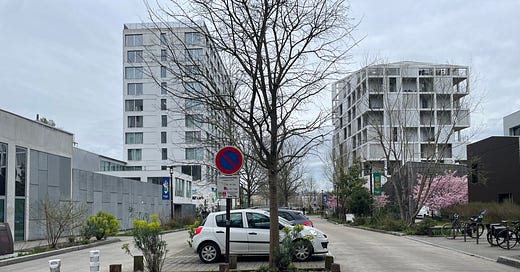




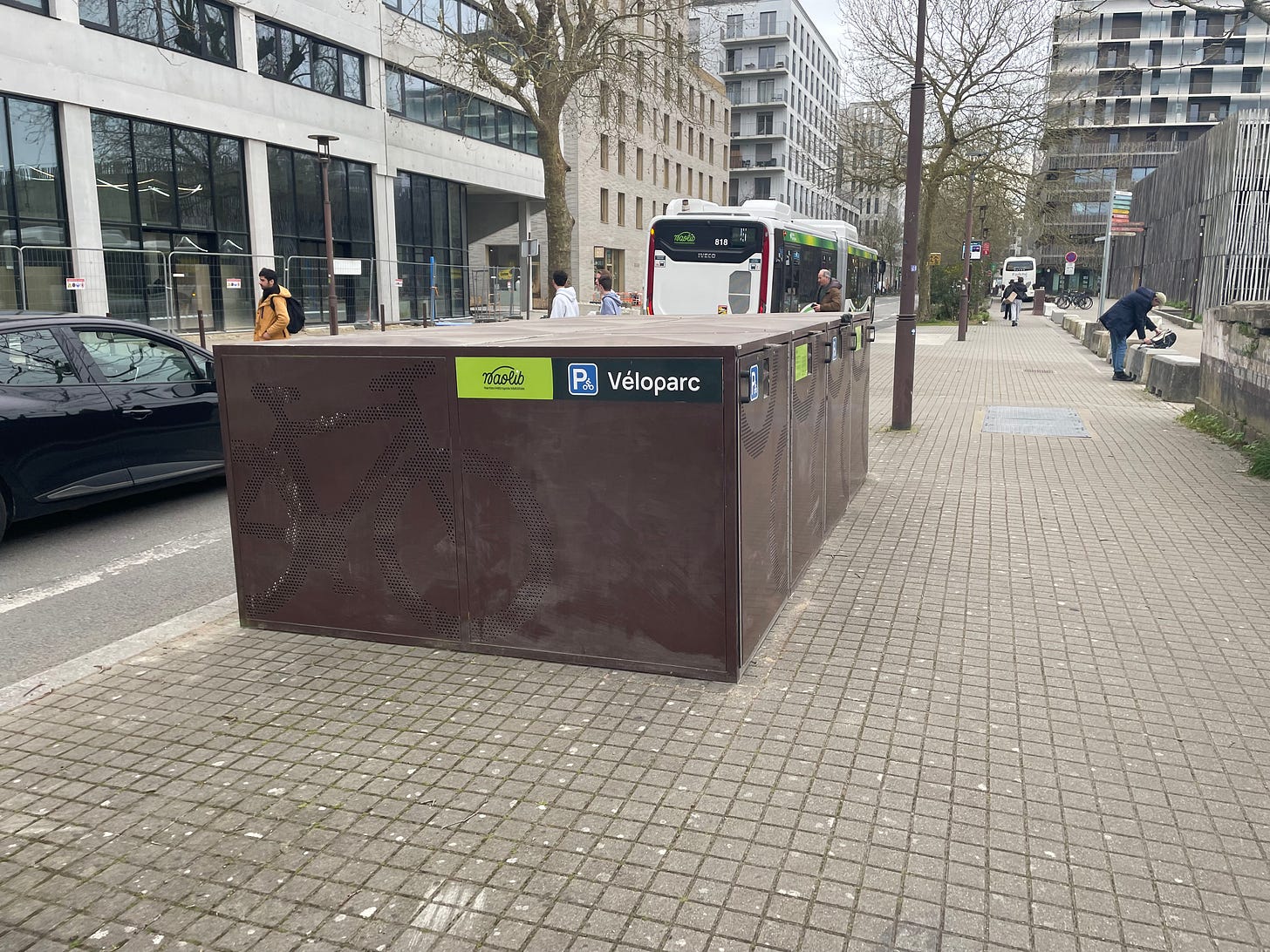


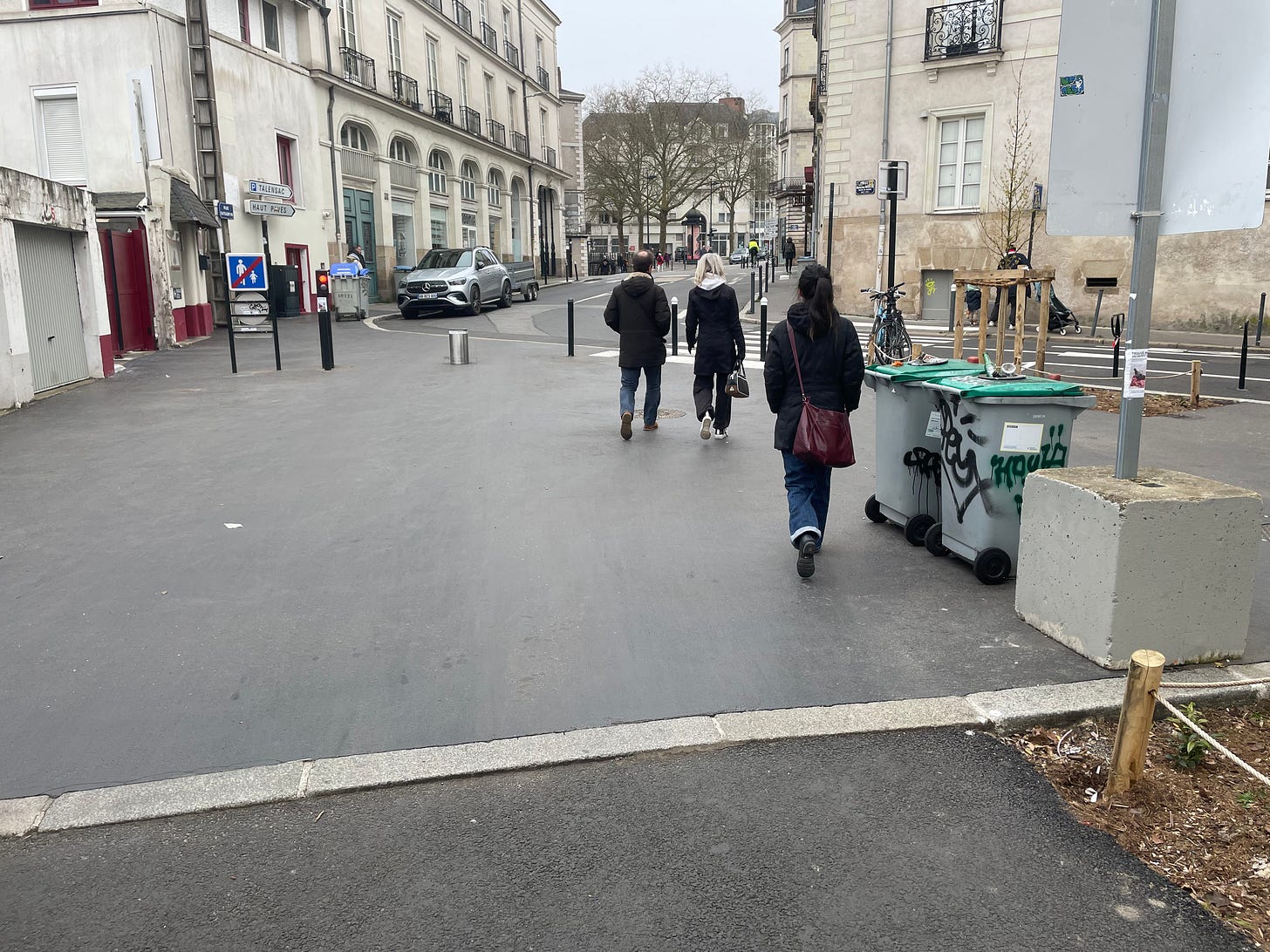

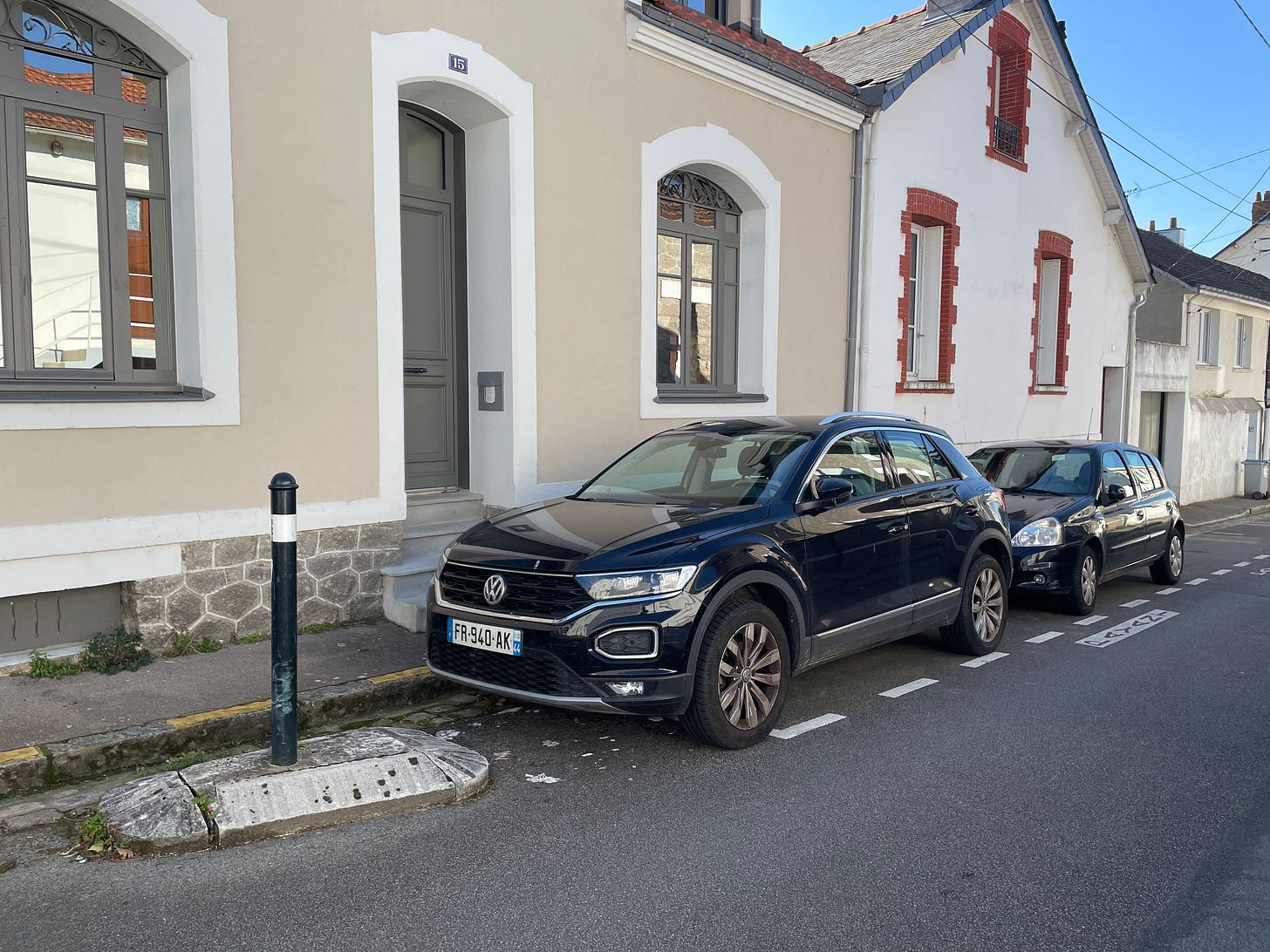

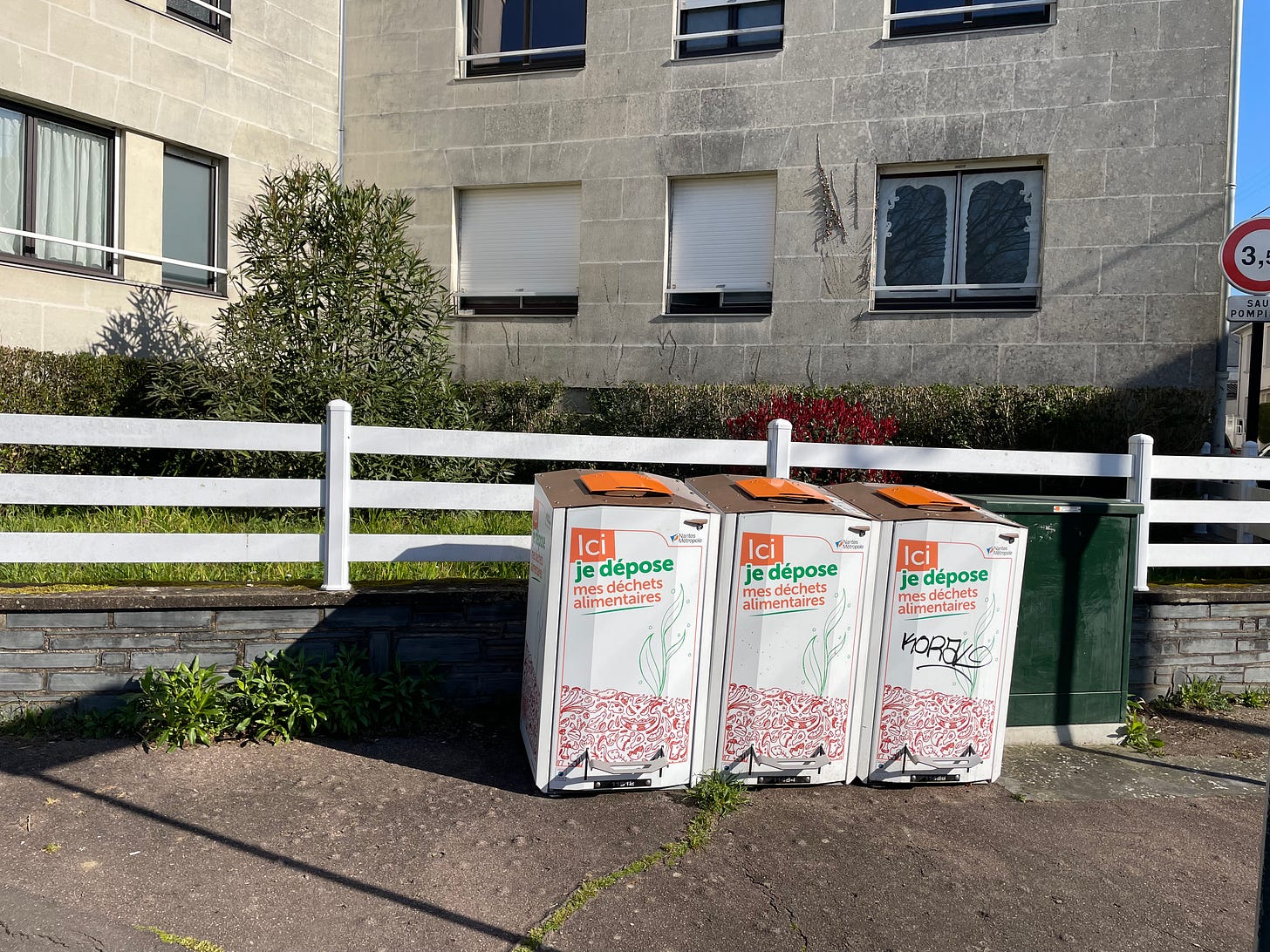
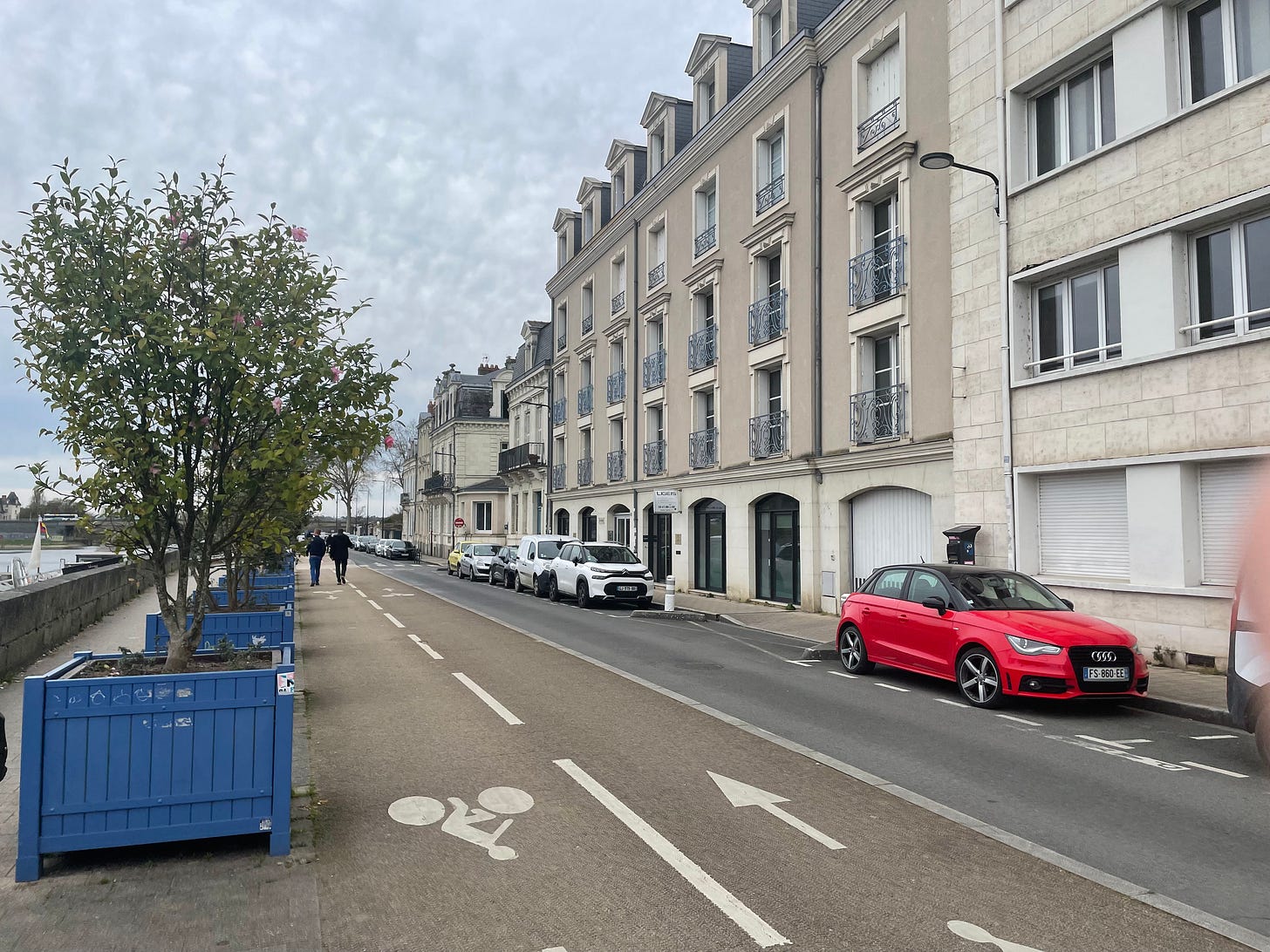
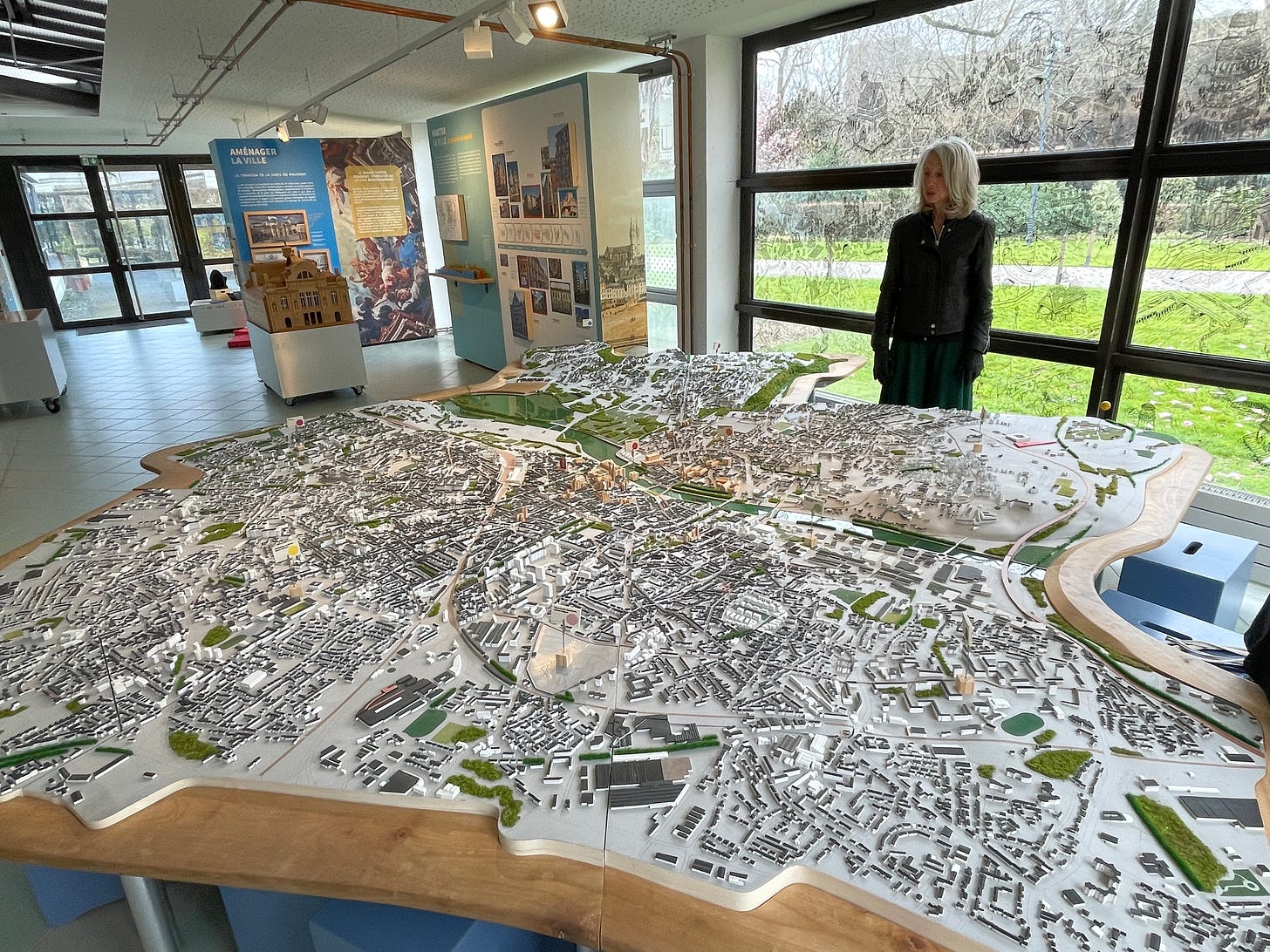


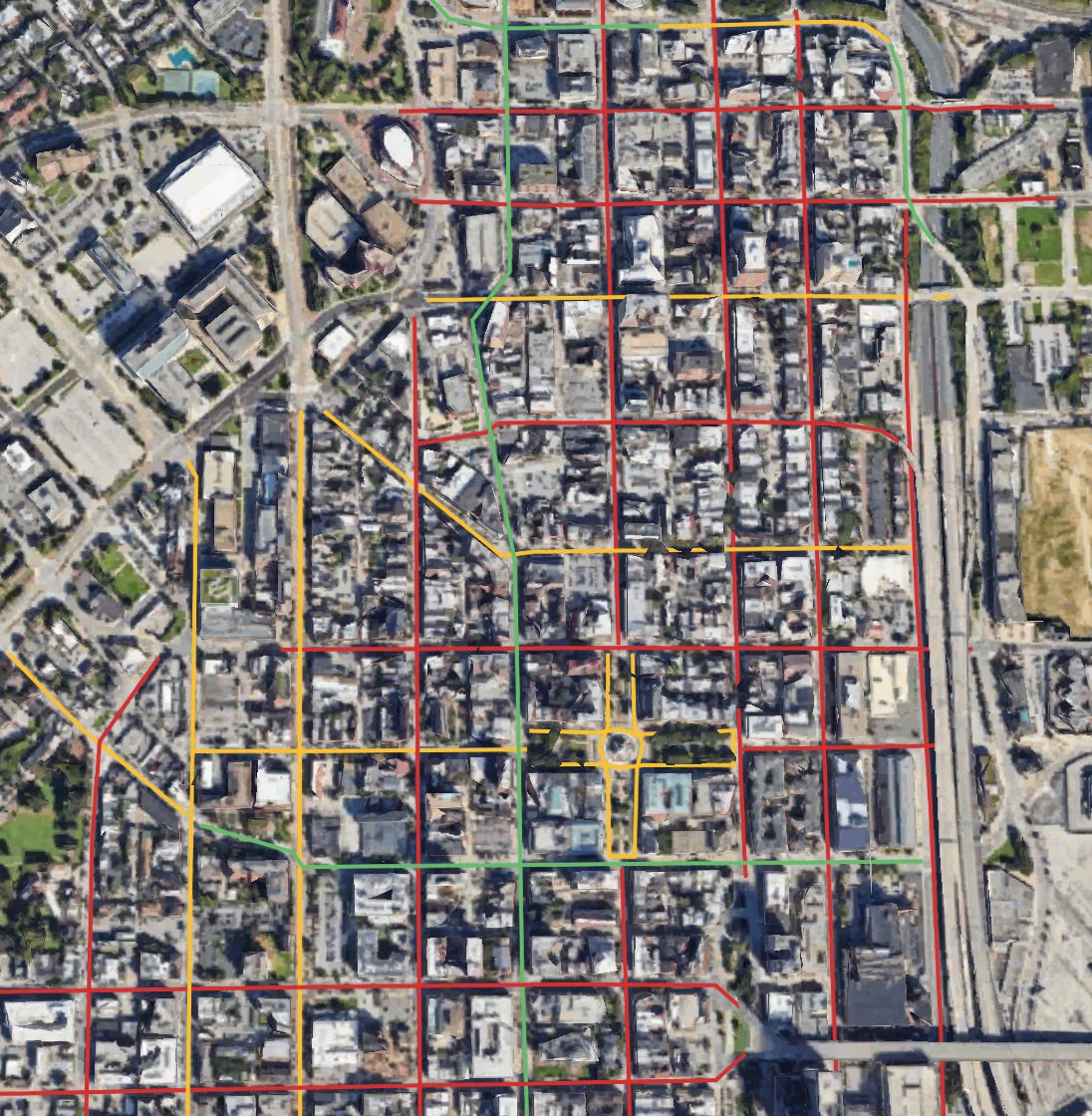
I very much like the parking in the middle of the street as a form of incrementalism. While bus lanes are great in a lot of places the political battle to directly lower parking a lot is a loser so incremental changes that are positive help without being instant pedestrianization of a block